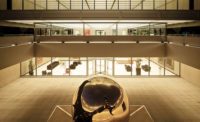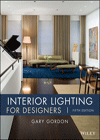New York, New York
Located on the 29th floor of a 1960s Park Avenue office tower, the New York City home of the Cofra Group and its Good Energies venture capital company—an investor in such renewable energy enterprises as Sage Electrochromics—is proof that this Switzerland-based corporation takes its business to heart.
The project, which has LEED-CI (Commercial Interiors) Gold certification, was spearheaded by architect Pat Sapinsley, AIA, a Good Energies senior associate with her finger on the pulse of energy-efficient and sustainable practices. Hoping to demonstrate the values suggested by the firm’s motto, “People, Planet, Profit,” Sapinsley worked with Perkins+Will director of interiors Joan Blumenfeld, FAIA, and project designer Steven South. The architects gutted the 22,500-square-foot space with the intent of using daylight as the primary means of illumination. Consistent with the green directive, they saved 75 percent of the construction debris for recycling, and replaced as many of the traditional building materials as possible with earth- and people-friendly alternatives: FSC-certified wood; linoleum; recycled polyester fabric panels; denim insulation; carpeting with low-VOC adhesive; low-flow toilets and faucets; and Energy Star–compliant electrical and mechanical equipment, office gear, and kitchen appliances. Daylighting is the primary player in the daily reduction of energy consumption—which, at .76 watts per square foot, is 24 percent better than code.
Newly defined perimeter offices and conference rooms are enclosed with transparent and translucent glass, so that light penetrates through to the floor plate. Similarly, walls across the hall filter this light to inner cubicles and meeting areas. Bordering the reception areas on opposite sides of the building, louverlike partitions direct sunlight into the elevator lobby. Additionally, to maximize illumination and minimize the use of electric light, South specified light-hued reflective surface materials, including white furnishing systems, natural maple, textural limestone mosaics, and glare-free frosted resin.
As for devising the appropriate balance of shading, electric light, and controls, the architects tapped Horton Lees Brogden Lighting Design (HLB). A series of sensors in the perimeter offices monitor several factors: daylight, foot-candles reflected by the surfaces, and occupancy. The sensors activate mechanisms for raising and lowering the motorized, semisheer shades, as well as for operating and dimming the ambient overhead and indirect wall fixtures (both fluorescent) depending on the sun’s brightness and glare or whether the room is occupied. Yet, according to HLB project manager Shoshanna Segal, “The [client] also wanted to have as much control as possible for individual occupants. So everybody was afforded override control over both the shades and the light.” A stylish LED task lamp on each desk operates manually. Nevertheless, Segal notes, for the most part the electric lights are off in at least 85 percent of these offices. “They just don’t use their lights, which is exactly what we wanted.”
The remainder of the scheme has less to do with overt environmentalism than with good design, says Segal. Thus, the hall is lit by slender, 2-foot, 14-watt lamps spaced 10 feet on center—keeping the area slightly darker to define it as a separate space. Large circular T5 fixtures have concave diffusers that cast a pleasant glow over the workstations and into the upper areas of the walls. Halogen, metal-halide, and LED sources combine with fluorescent tubes in the lobby/reception areas, conference rooms, and pantry for flexibility, ambience, and human comfort.
Ultimately, Segal believes that sustainable lighting design is not only about what light bulb you use. “It’s about using all the tools available to you in a way that functions for users and provides a visually comfortable environment for them to work and live in.” When done well, she claims, it’s a compromise. “We save in places where it’s possible to save, so that we can spend in places where we need to.”






